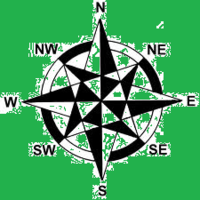Automated Transportation
Revision as of 16:14, 25 March 2014 by Anaimfinity Resident (talk | contribs) (Created page with "200px|thumb|right|Second Life Geography '''NOTE: THIS ARTICLE IS UNDER DEVELOPMENT. ESTIMATED FINISH DATE: MAY 1ST 2014''' This article is made to …")
NOTE: THIS ARTICLE IS UNDER DEVELOPMENT. ESTIMATED FINISH DATE: MAY 1ST 2014
This article is made to give general information about automated vehicles and to offer important links to other themed articles.
Classification
Automated vehicles can be divided into different groups:
- By the surface they circle on:
- Parcel vehicles - they move only on a limited area inside a sim
- Sim vehicles - they move inside a sim
- Multisim vehicles - they go through more sims, but still they are limited
- Continental vehicles - they travel accross a huge distance.
- By the 'brain' mechanism that controls them:
- Runaway vehicles - they have a random movement
- Roaming vehicles - they self-orientate on the way, trying to avoid obstacles
- Programmed vehicles - they move along a well-estabilished route
- Scheduled vehicles - they follow both a well-estabilished route and a timetable.
- By the type of route they follow:
- Road vehicles
- Railway vehicles (following a 'Guide' or no)
- Water vehicles
- Air vehicles
- Suspended vehicles (monorails, skiruns)
- Convertable vehicles.
- By the degrees of freedom a vehicle has:
- Constrained vehicles (follows exactly the path they are instructed)
- Guided vehicles (follow the waypoints)
- Roaming vehicles (find their way through)
- Passenger controled (partially)
- Full-controled by passengers (but able to move also without passengers).
- By how they interact with other avatars and vehicles:
- Complete invisible (usually used for spy)
- Phantom vehicles
- Phantom, but with powers to change things (like railway switches or light stops)
- Non-phantom vehicles
- Aggresie vehicles (noisy, spam makers, high lag).
- By frequence:
- Occasional vehicles (released at rare occasions)
- Resident - command released vehicles
- Rare vehicles (at more then an hour)
- Average frequence (between 10 minutes and an hour)
- High number of vehicles (more then one in 10 minutes).
- By information storage criteria:
- Single script data
- Multiscript data (information stored in more then one script)
- Notecard data (information stored on a notecard)
- External storage data (information stored outside SL)
- Rezz data (information stored on multiple scripts, inside a prim that is rezzed to replace used scripts).
